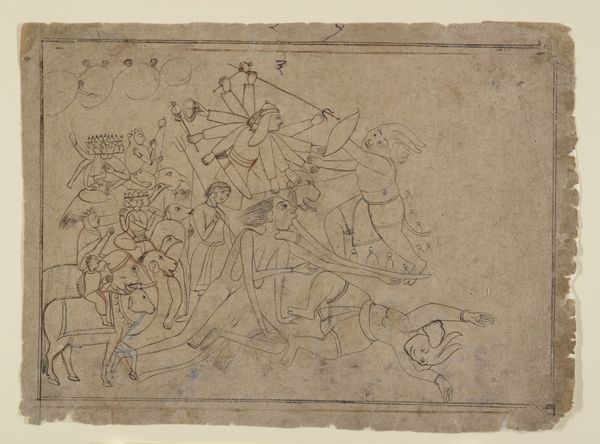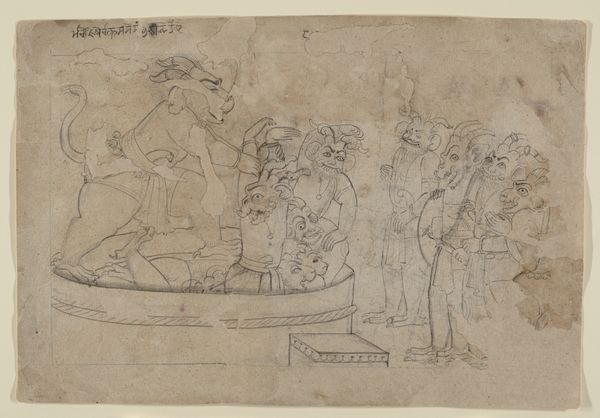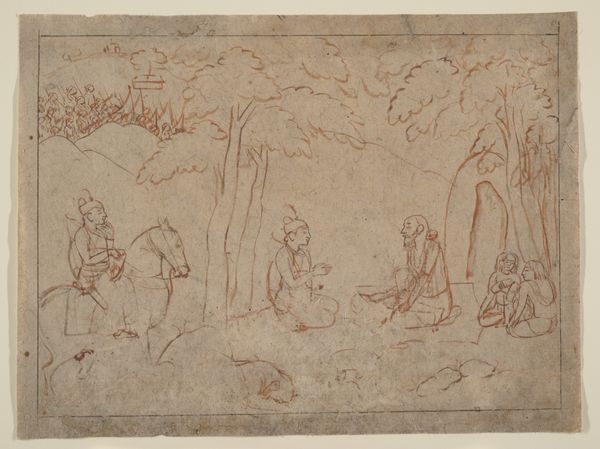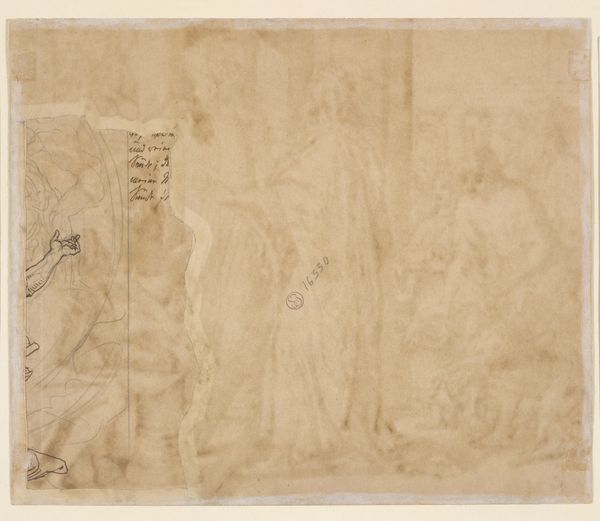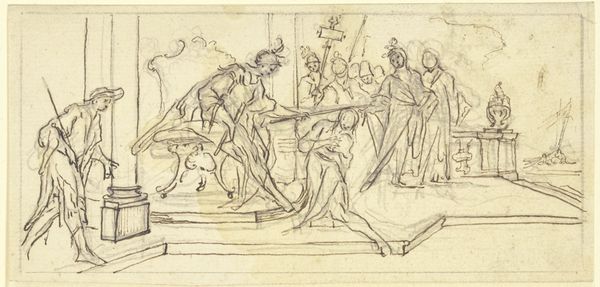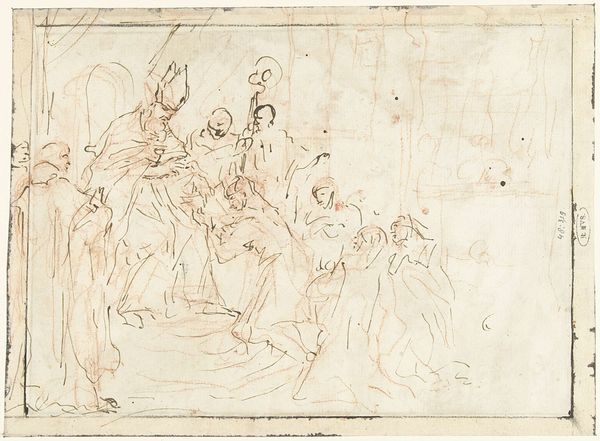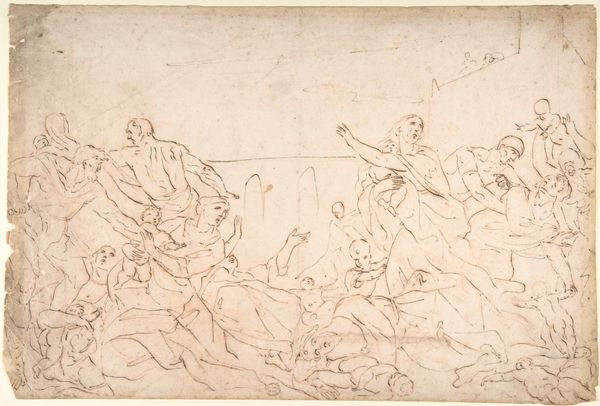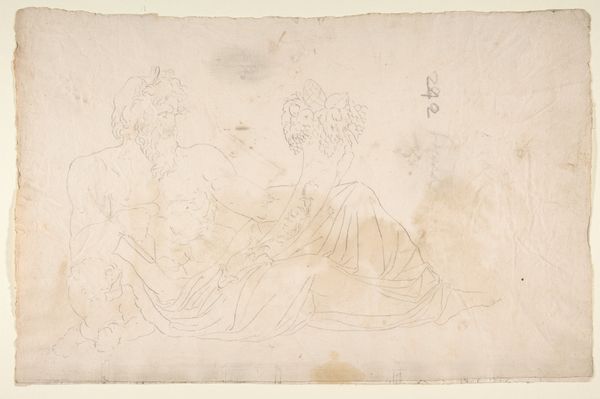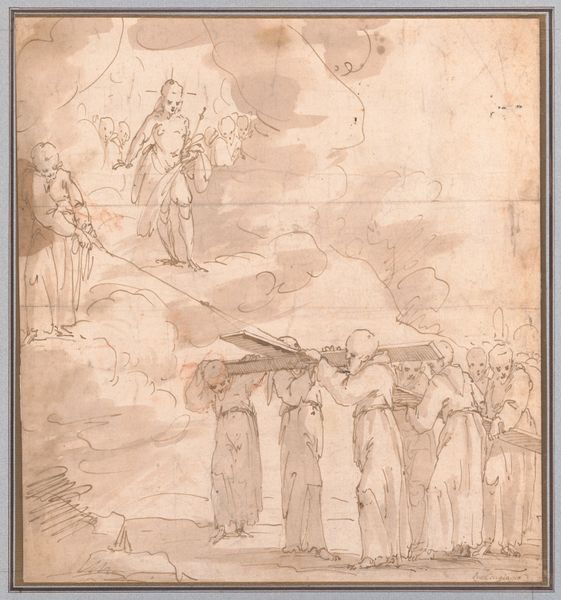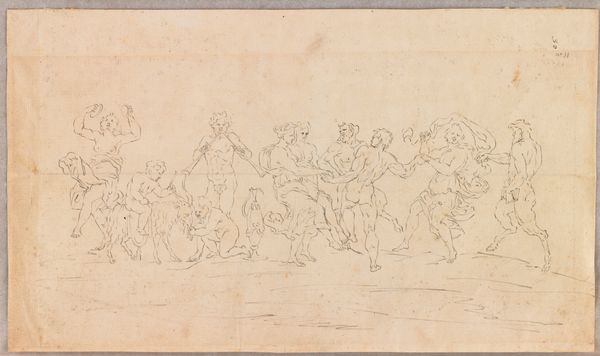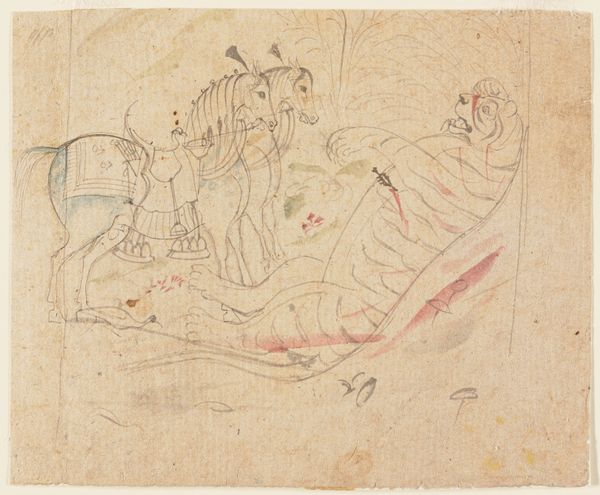
drawing, paper, pencil
#
drawing
#
narrative-art
#
asian-art
#
landscape
#
figuration
#
paper
#
pencil
#
line
Dimensions: 9 3/4 x 6 9/16 in. (24.7 x 16.7 cm)
Copyright: Public Domain
Editor: So this is "Gods and Demons Adoring Siva," around 1780, made anonymously with pencil on paper. It feels like a preliminary sketch – so simple and yet so full of implied activity! What can you tell me about this drawing? Curator: It’s fascinating to consider this piece in light of the burgeoning print culture of 18th century India and the role of workshops catering to both local elites and a growing European market. This image, though a drawing, hints at the process of translating complex religious narratives into portable, reproducible forms. Notice the clear delineation of figures. How do you think its intended audience might have influenced its composition and the artist’s choices? Editor: It feels less detailed than other Asian art I've seen, almost like it's meant to be easily copied, maybe? Was it made to be reproduced for a broader audience, a little like devotional prints? Curator: Precisely. The scale, the linear quality, the relatively uncluttered background – these all point towards accessibility. Think about the political landscape then. British influence was growing. How might art have been used to negotiate cultural identity in the face of colonial power? Editor: Maybe by simplifying complex religious ideas, art made it easier for more people to connect with their culture and share those values despite outside influence. I'd not thought about art having this effect, of allowing everyone to claim ownership. Curator: Exactly! It highlights the dynamic relationship between art, power, and public reception. Art as a negotiation of cultural spaces. Editor: This has definitely changed how I'll look at similar works! Curator: Me too. These connections underscore how artistic creation isn't separate from society, but a real, tangible cultural document.
Comments
No comments
Be the first to comment and join the conversation on the ultimate creative platform.


